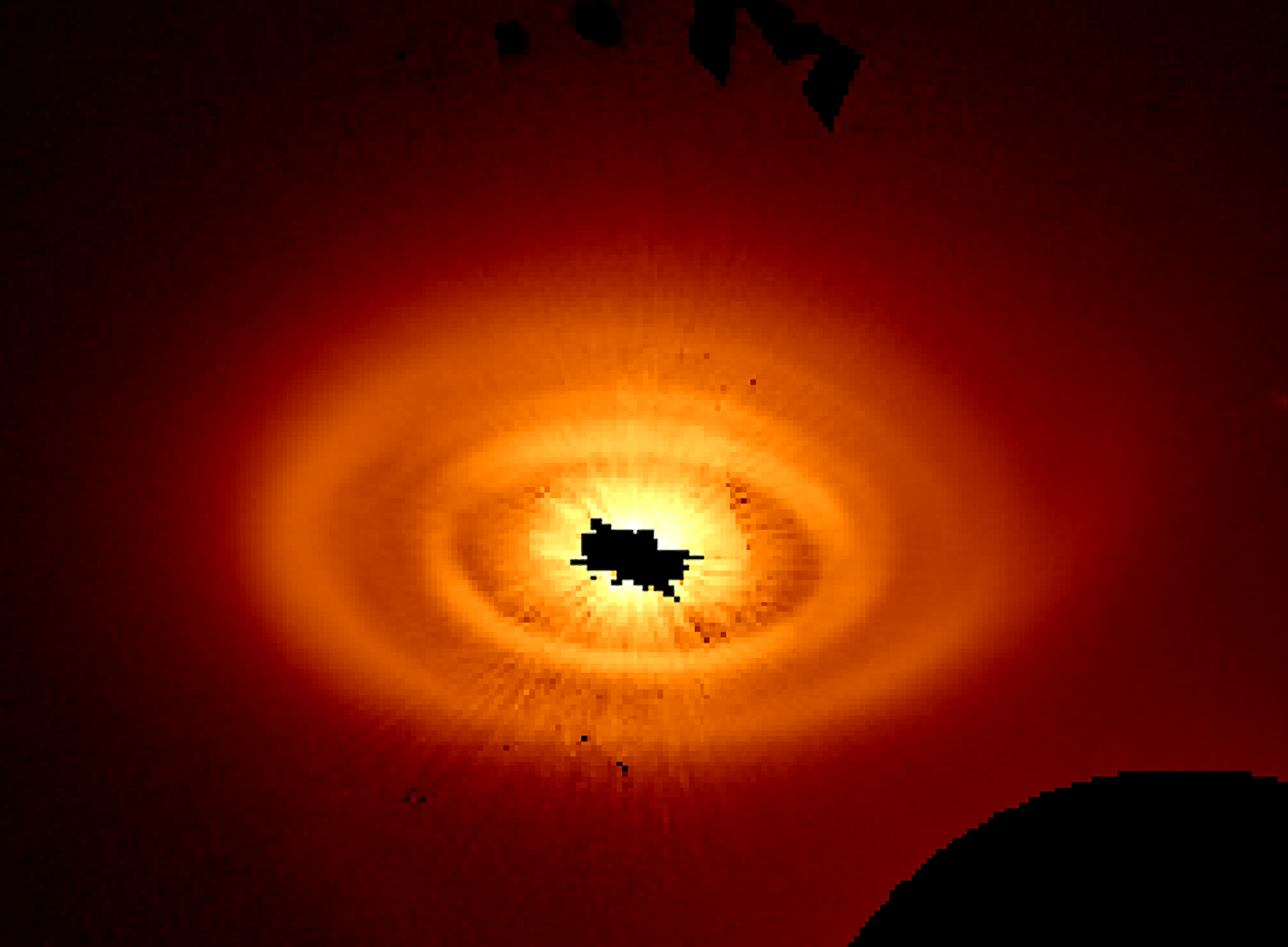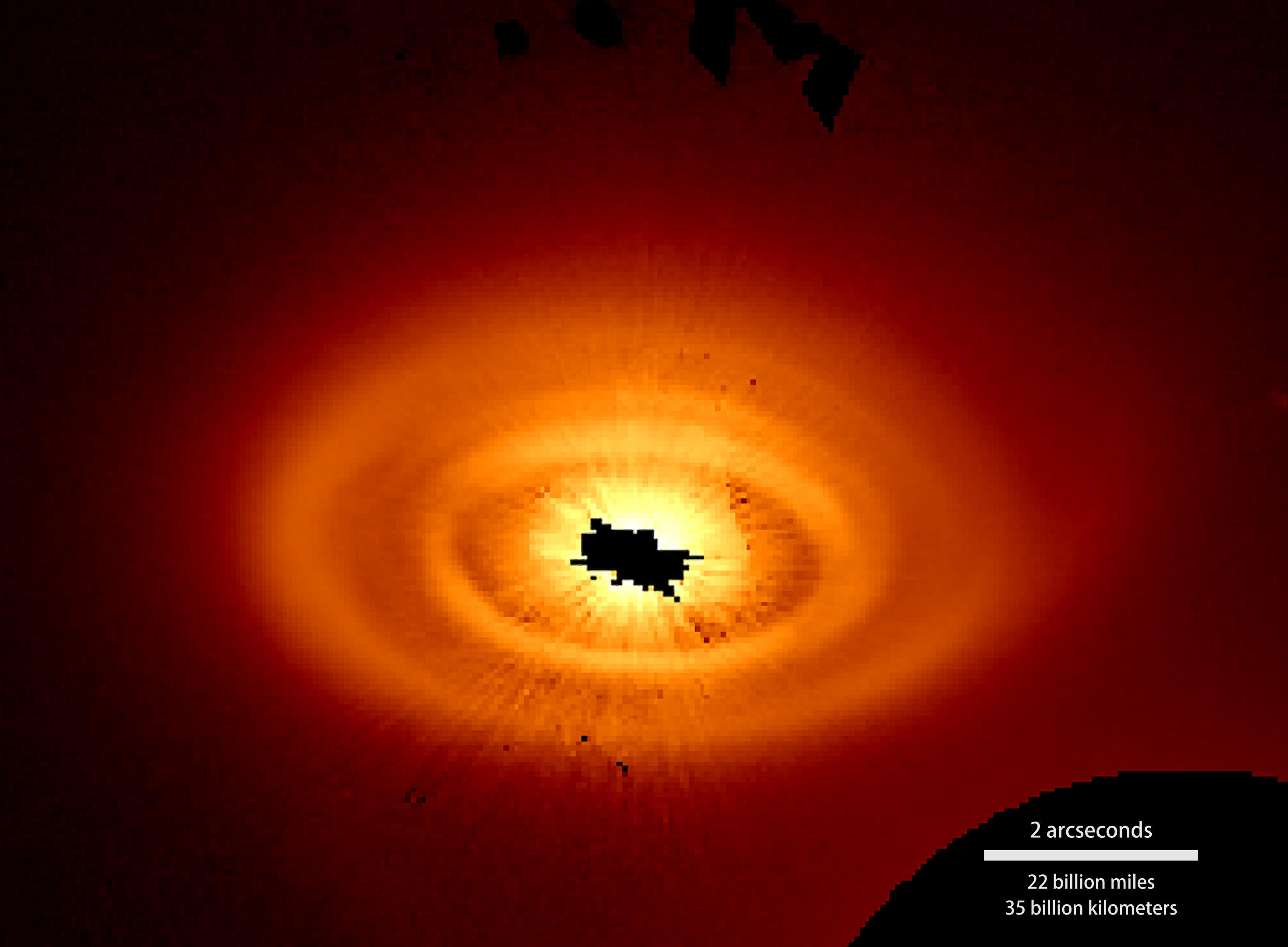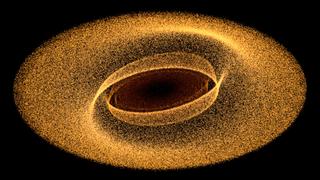Universe
ID: 12807
When exoplanet scientists first spotted patterns in disks of dust and gas around young stars, they thought newly formed planets might be the cause. But a recent NASA study cautions that there may be another explanation one that doesn’t involve planets at all.
An alternative explanation suggests the dust and gas in the disk can form the patterns themselves when they interact with starlight.
When high-energy UV starlight hits dust grains, it strips away electrons. Those electrons collide with and heat nearby gas. As the gas warms, its pressure increases and it traps more dust, which in turn heats more gas. The resulting cycle, called the photoelectric instability (PeI), can work in tandem with other forces to create some of the features astronomers have previously associated with planets in debris disks.
A 2013 study suggested PeI could explain the narrow rings seen in some disks. The model also predicted that some disks would have arcs, or incomplete rings, which weren’t directly observed in a disk until 2016.
The new simulation includes an additional new factor: radiation pressure, a force caused by starlight striking dust grains.
Light exerts a minute physical force on everything it encounters. This radiation pressure propels solar sails and helps direct comet tails so they always point away from the Sun. The same force can push dust into highly eccentric orbits, and even blow some of the smaller grains out of the disk entirely.
The new research modeled how radiation pressure and PeI work together to affect the movement of dust and gas, and also found that the two forces manifest different patterns depending on the physical properties of the dust and gas.



Debris Disks Generate Spirals, Rings and Arcs in Simulations
An alternative explanation suggests the dust and gas in the disk can form the patterns themselves when they interact with starlight.
When high-energy UV starlight hits dust grains, it strips away electrons. Those electrons collide with and heat nearby gas. As the gas warms, its pressure increases and it traps more dust, which in turn heats more gas. The resulting cycle, called the photoelectric instability (PeI), can work in tandem with other forces to create some of the features astronomers have previously associated with planets in debris disks.
A 2013 study suggested PeI could explain the narrow rings seen in some disks. The model also predicted that some disks would have arcs, or incomplete rings, which weren’t directly observed in a disk until 2016.
The new simulation includes an additional new factor: radiation pressure, a force caused by starlight striking dust grains.
Light exerts a minute physical force on everything it encounters. This radiation pressure propels solar sails and helps direct comet tails so they always point away from the Sun. The same force can push dust into highly eccentric orbits, and even blow some of the smaller grains out of the disk entirely.
The new research modeled how radiation pressure and PeI work together to affect the movement of dust and gas, and also found that the two forces manifest different patterns depending on the physical properties of the dust and gas.



Related
For More Information
Credits
Scott Wiessinger (USRA): Lead Producer
Jeanette Kazmierczak (University of Maryland College Park): Lead Science Writer
Francis Reddy (Syneren Technologies): Science Writer
Marc Kuchner (NASA/GSFC): Lead Scientist
Jeanette Kazmierczak (University of Maryland College Park): Lead Science Writer
Francis Reddy (Syneren Technologies): Science Writer
Marc Kuchner (NASA/GSFC): Lead Scientist
Please give credit for this item to:
NASA's Goddard Space Flight Center. However, Individual items should be credited as indicated above.
NASA's Goddard Space Flight Center. However, Individual items should be credited as indicated above.
Science Paper:
https://arxiv.org/abs/1709.07982
Short URL to share this page:
https://svs.gsfc.nasa.gov/12807
This item is part of these series:
Narrated Movies
Astrophysics Simulations
Astrophysics Features
Keywords:
SVS >> HDTV
SVS >> Music
SVS >> Simulation
SVS >> Astrophysics
SVS >> Edited Feature
SVS >> Planets
SVS >> Supercomputer
SVS >> Star
NASA Science >> Universe
https://arxiv.org/abs/1709.07982
Short URL to share this page:
https://svs.gsfc.nasa.gov/12807
This item is part of these series:
Narrated Movies
Astrophysics Simulations
Astrophysics Features
Keywords:
SVS >> HDTV
SVS >> Music
SVS >> Simulation
SVS >> Astrophysics
SVS >> Edited Feature
SVS >> Planets
SVS >> Supercomputer
SVS >> Star
NASA Science >> Universe













